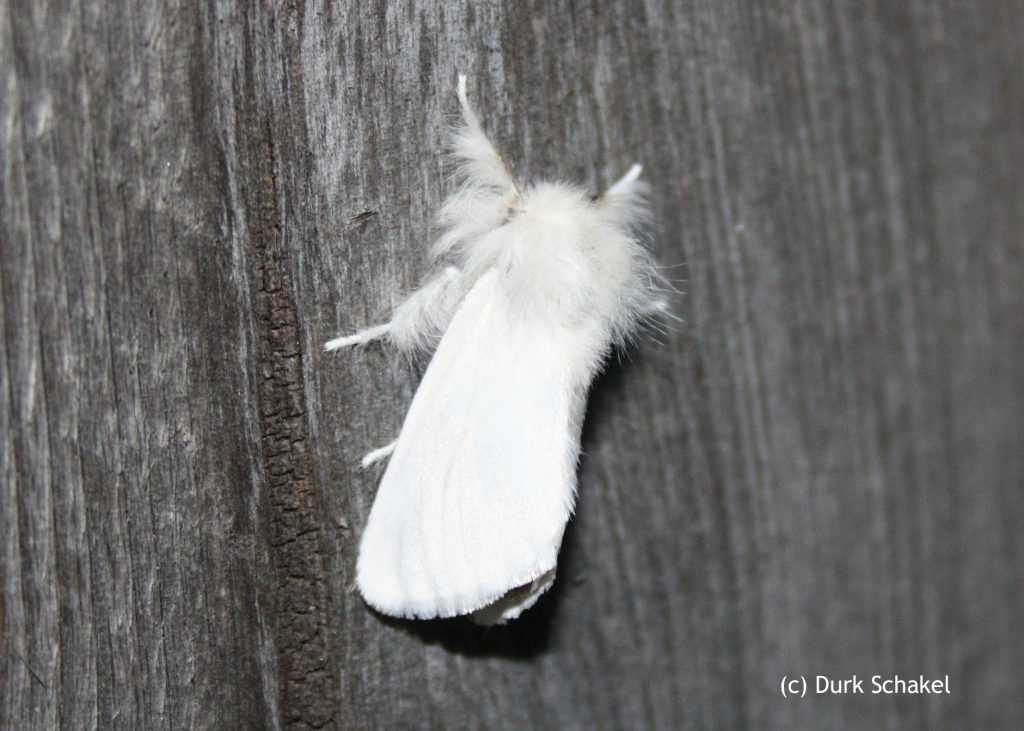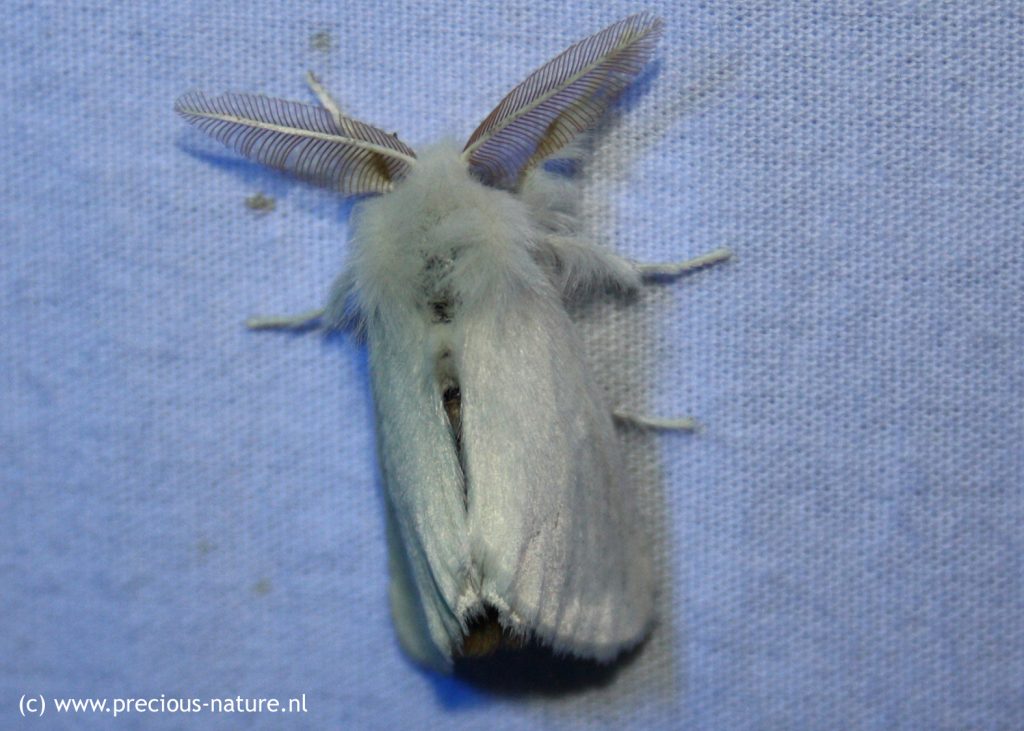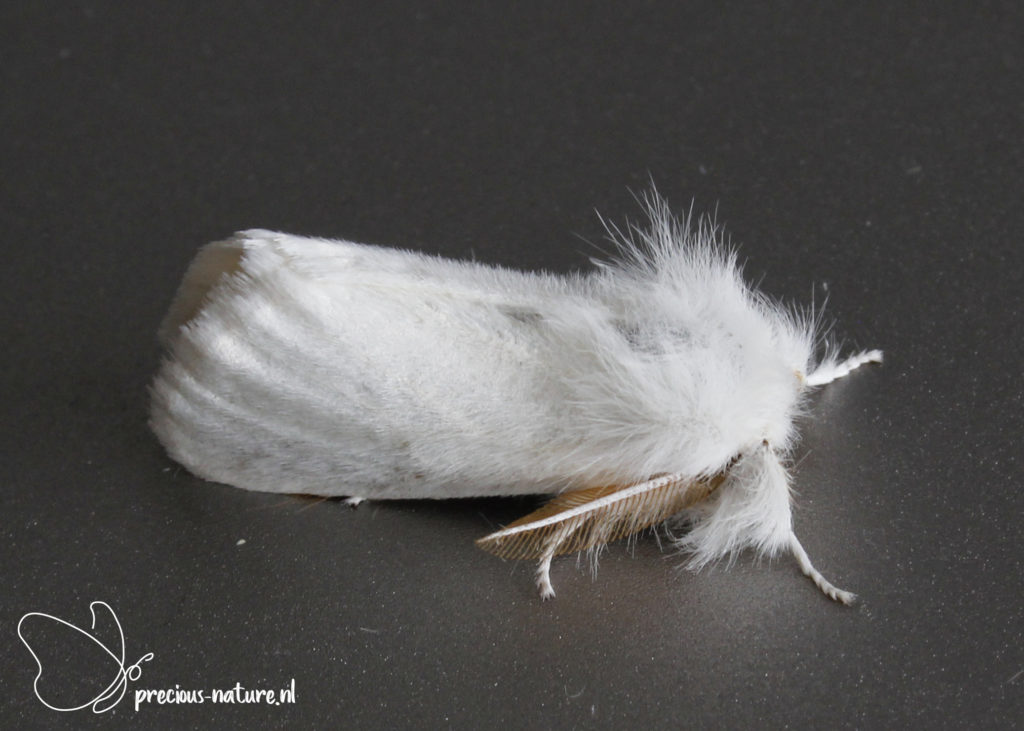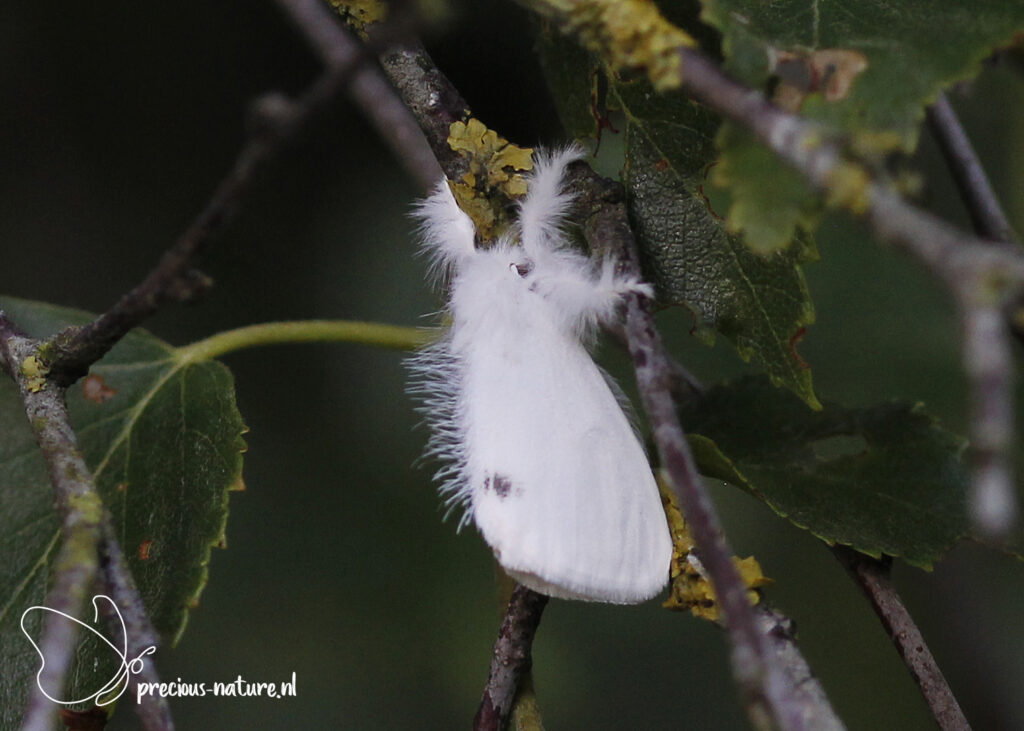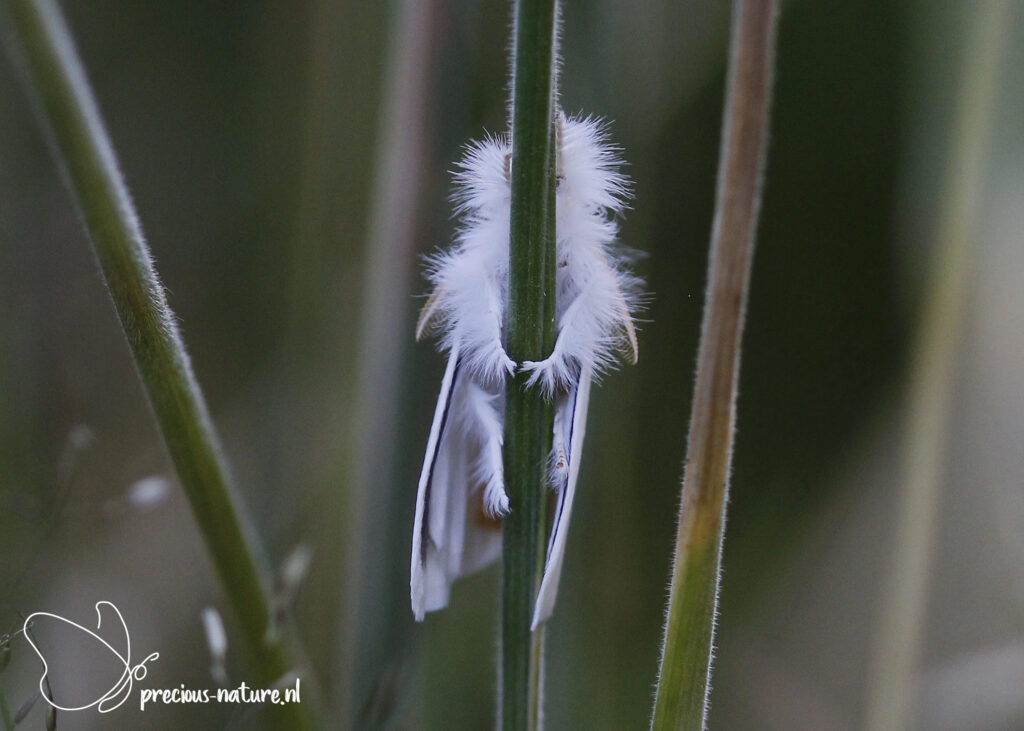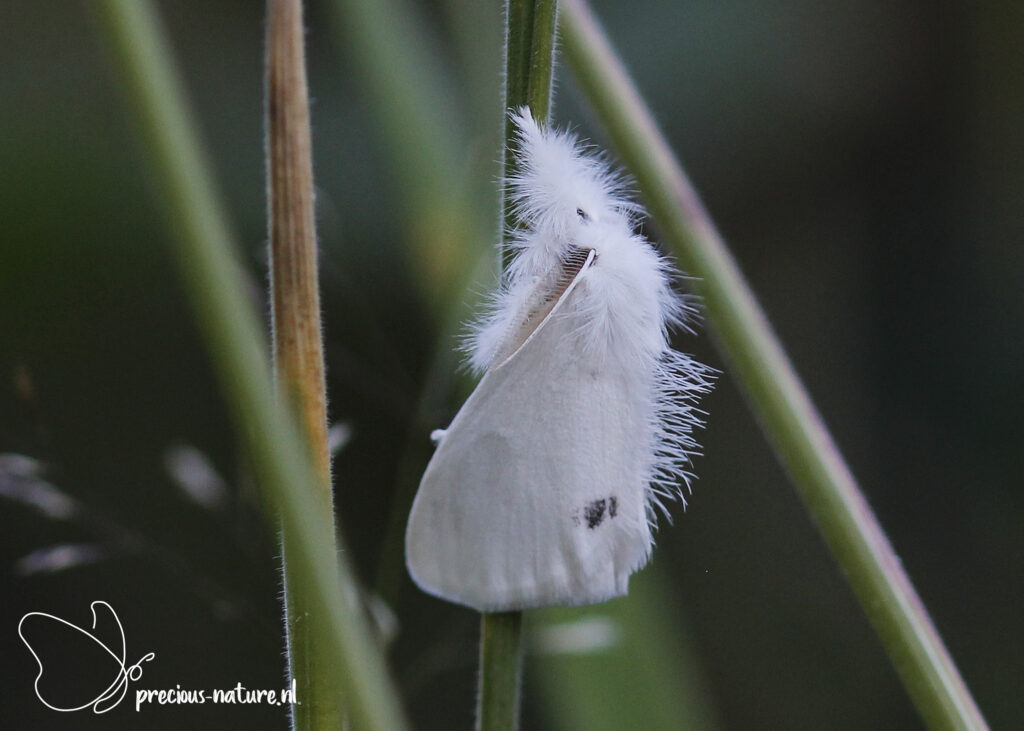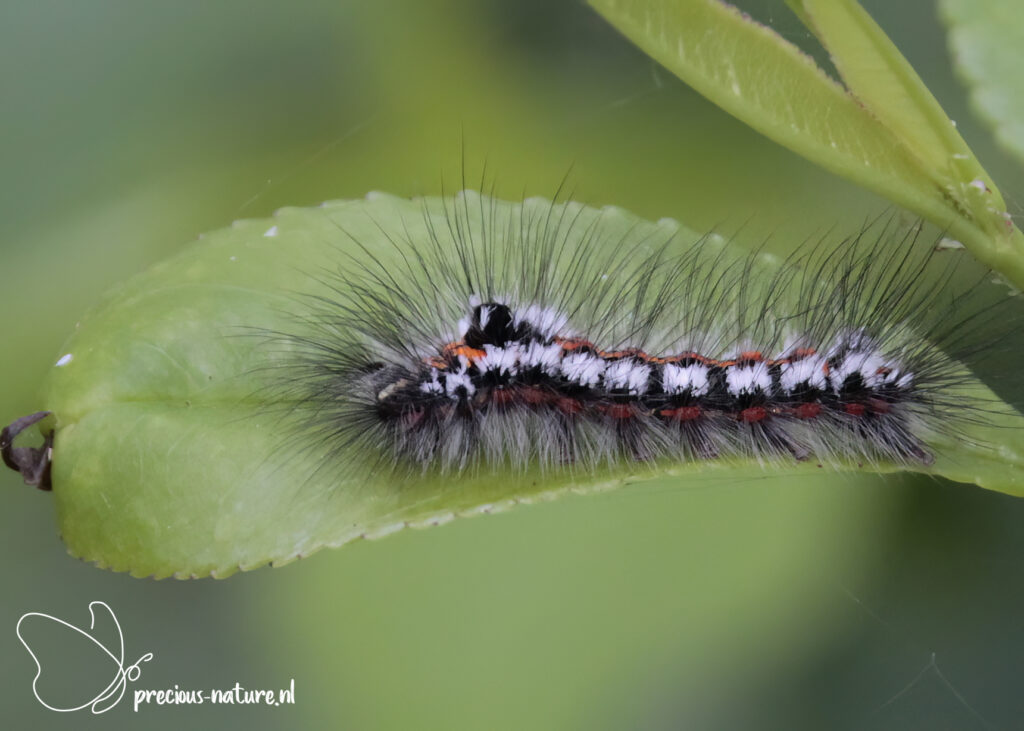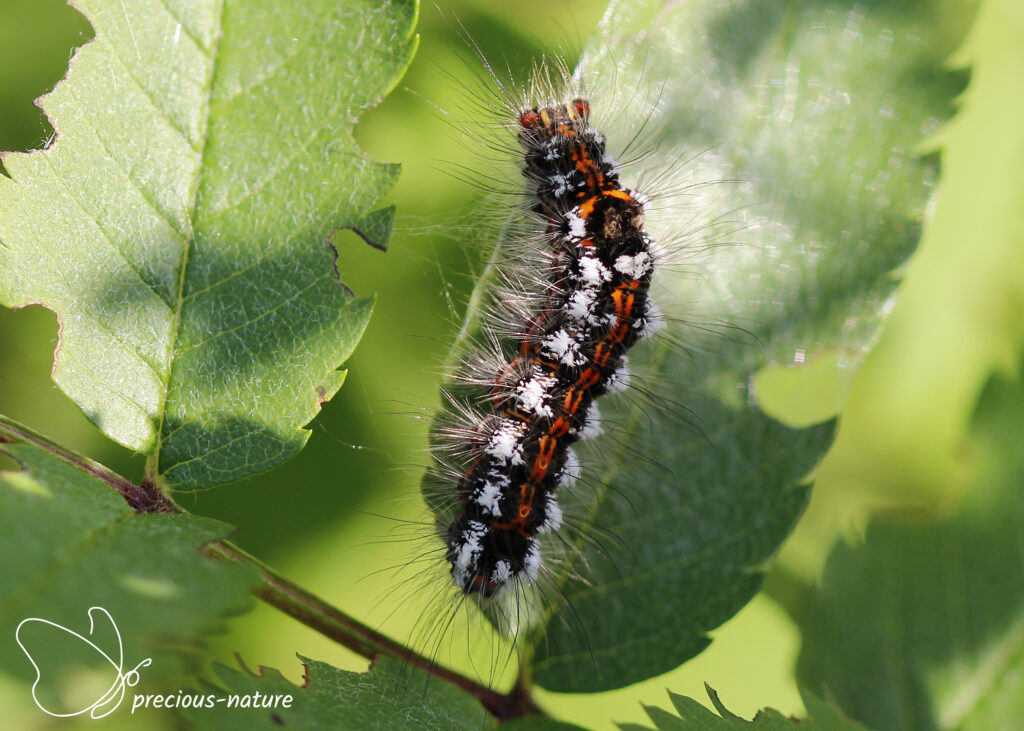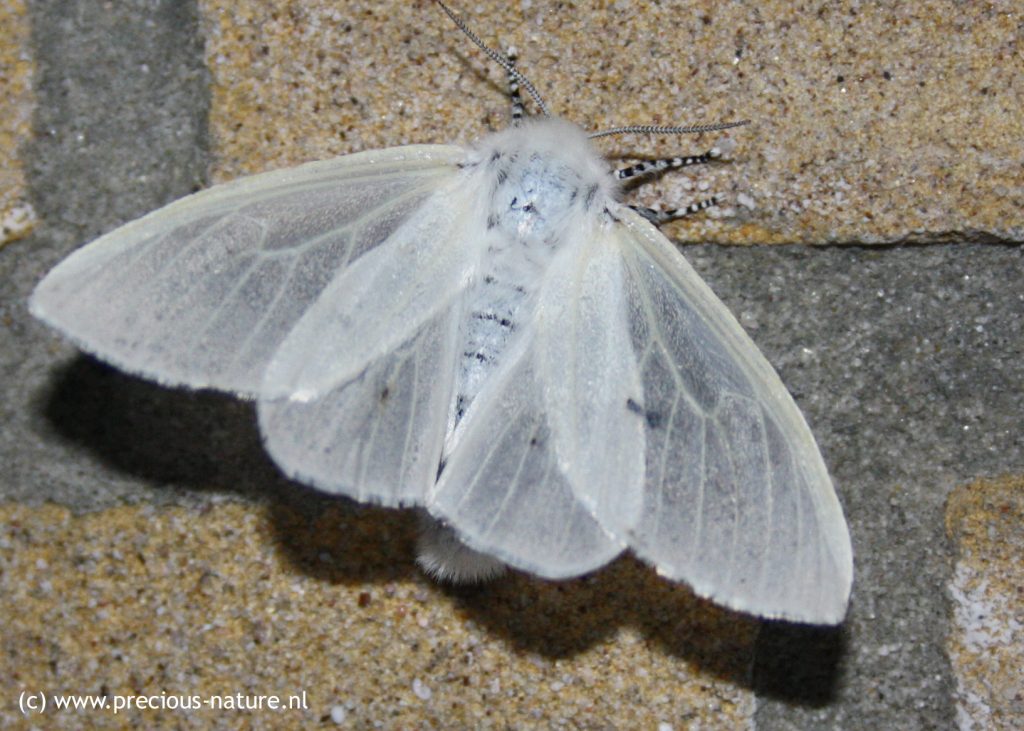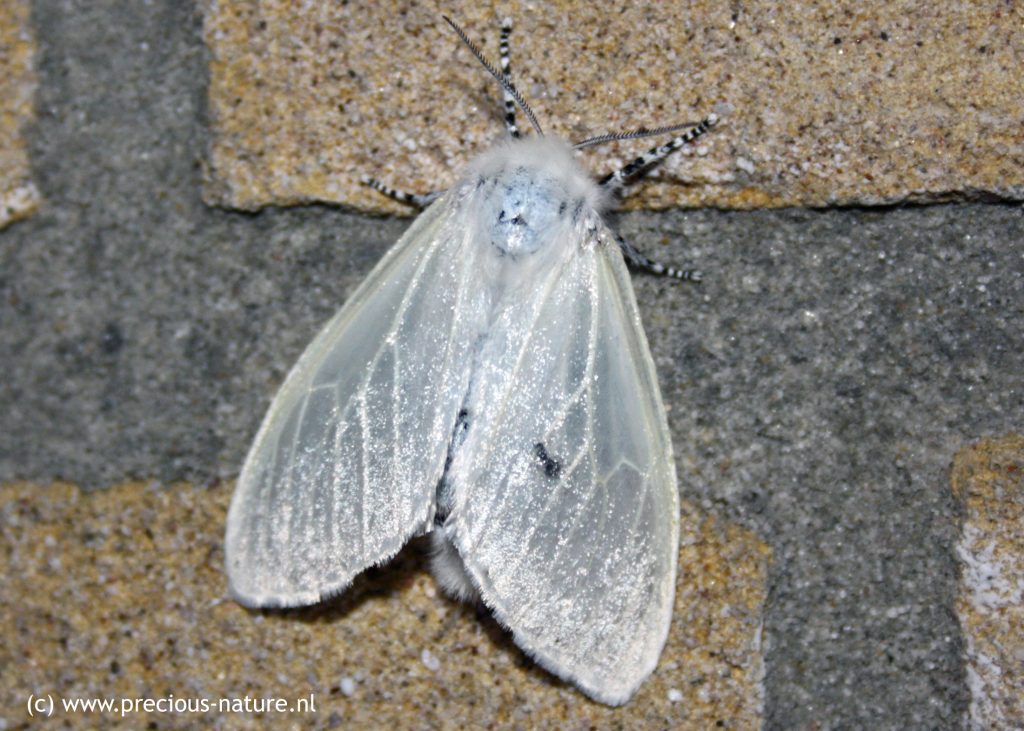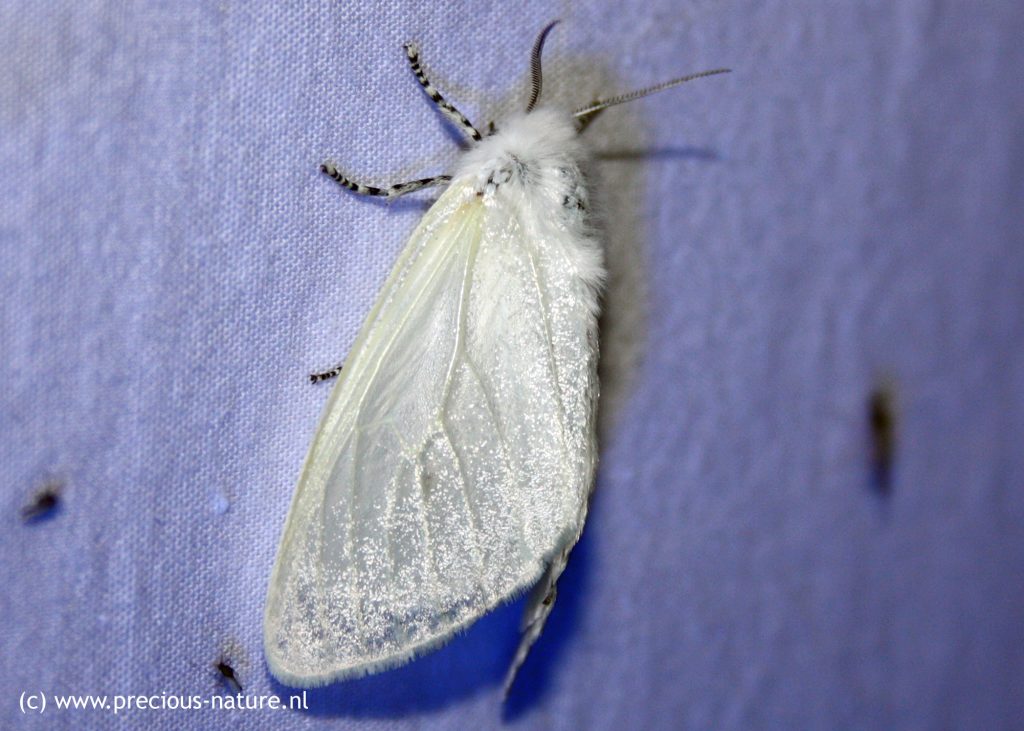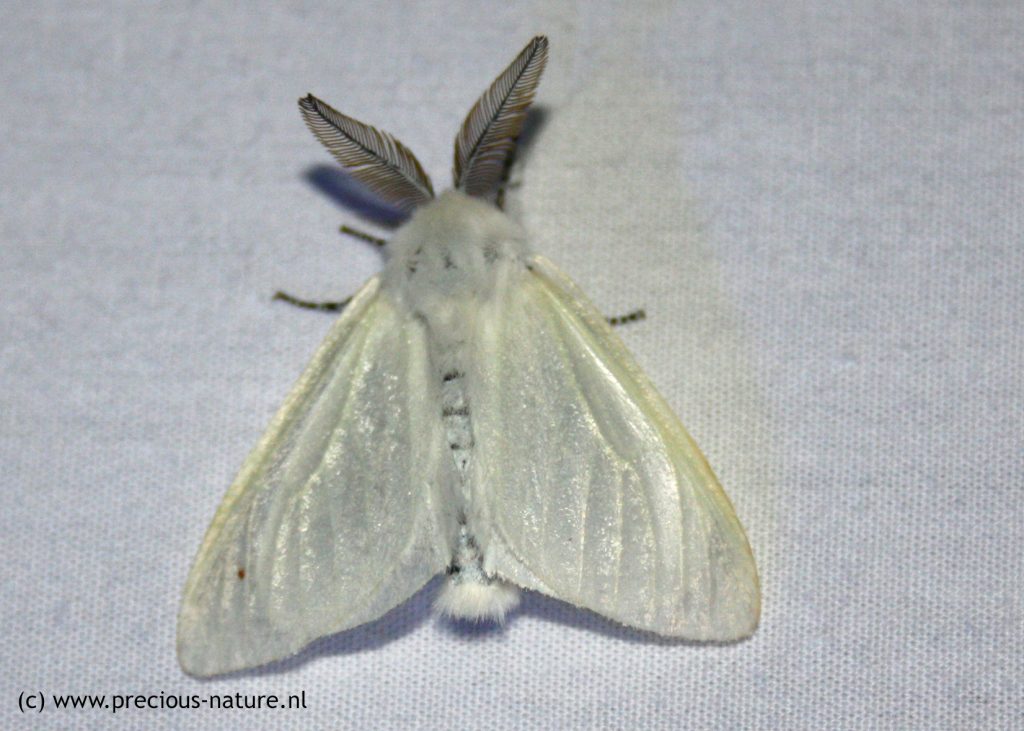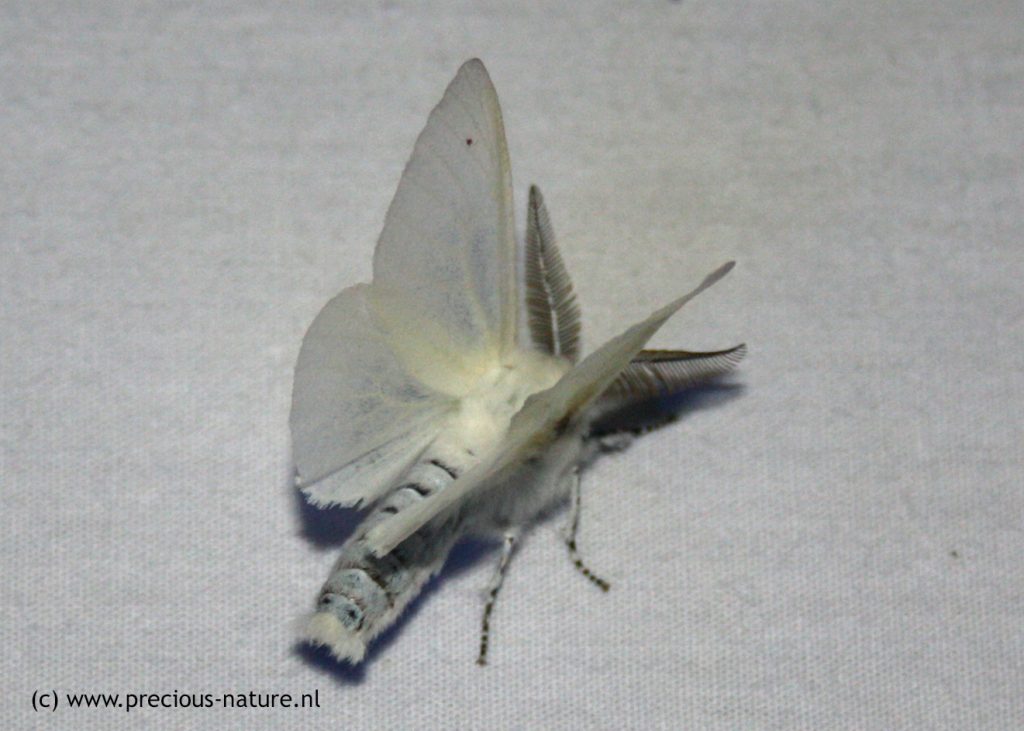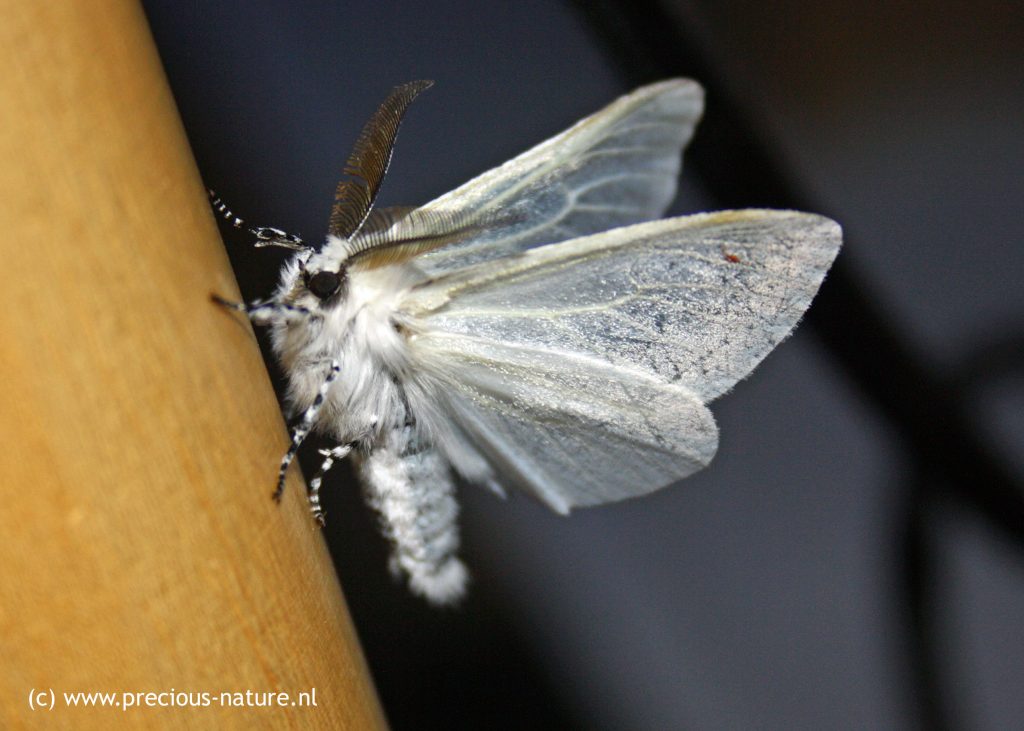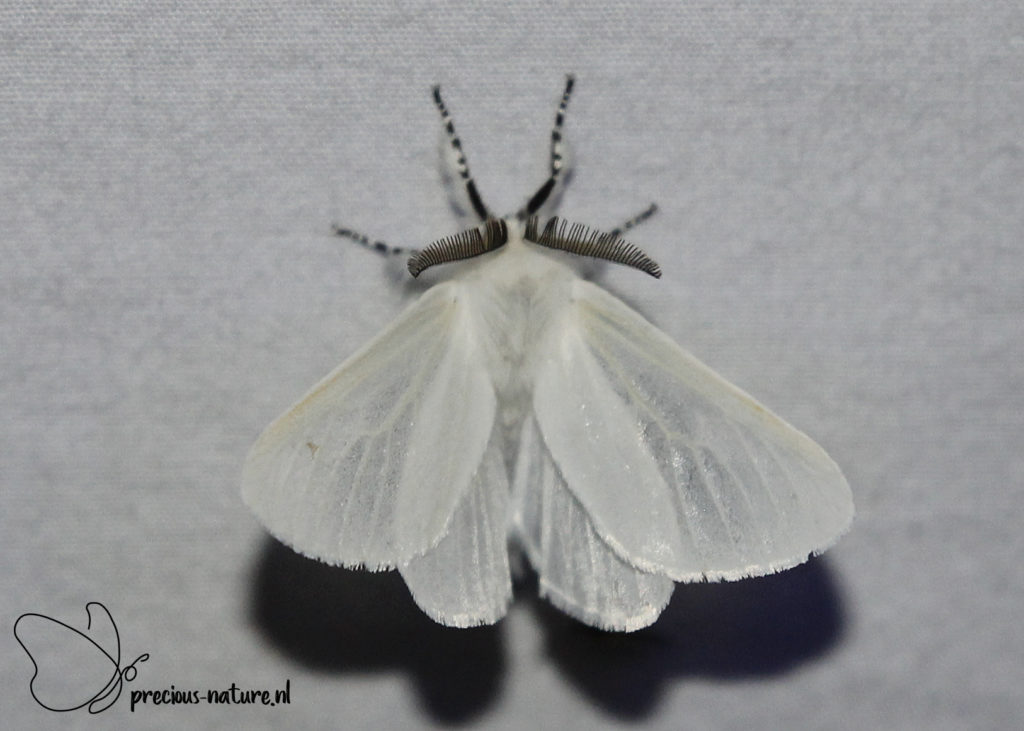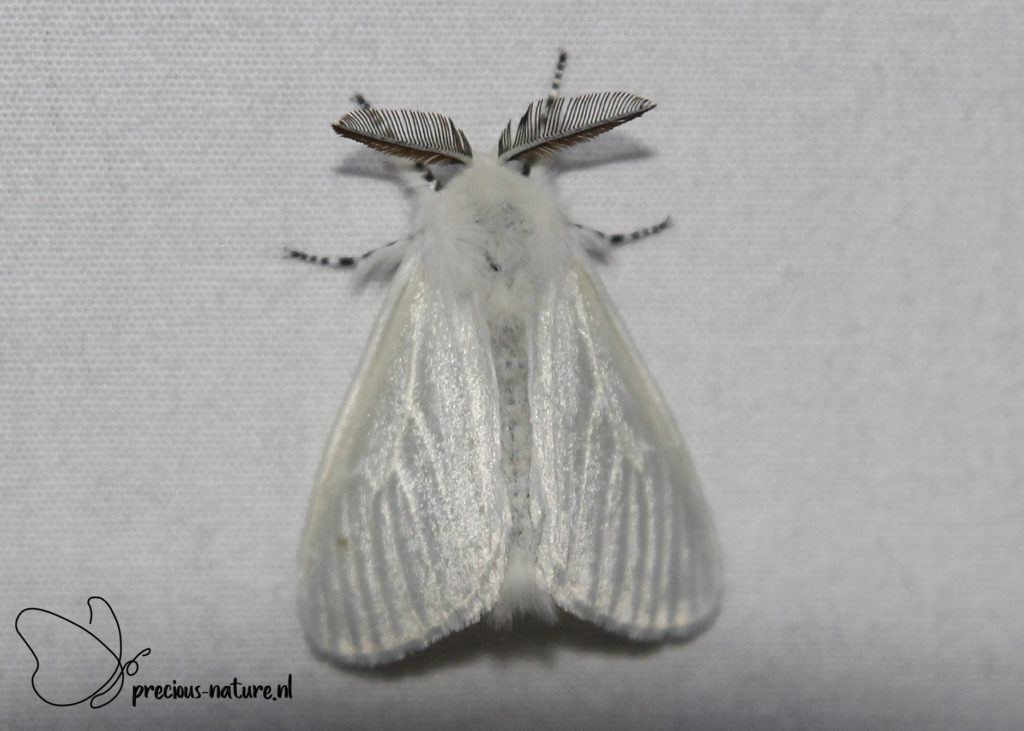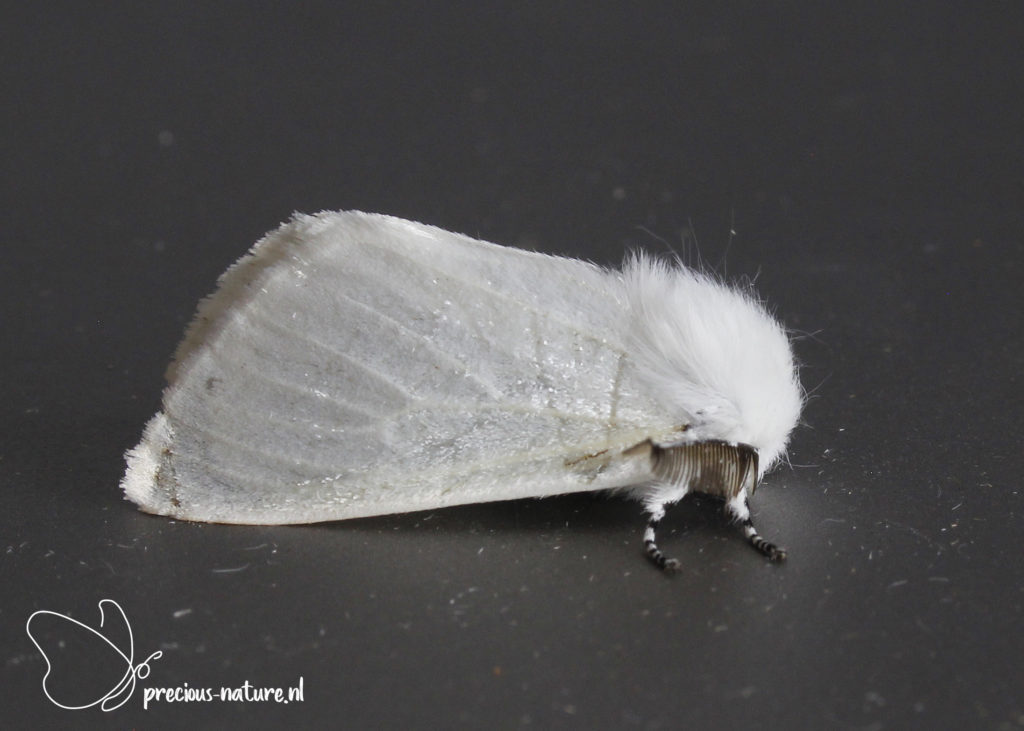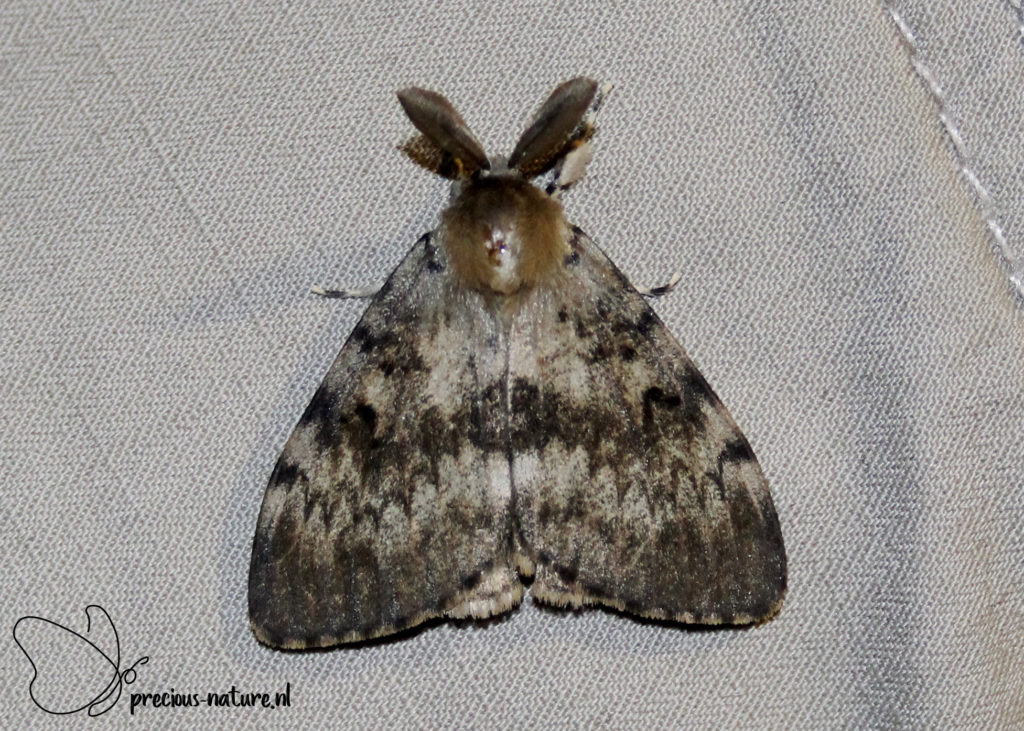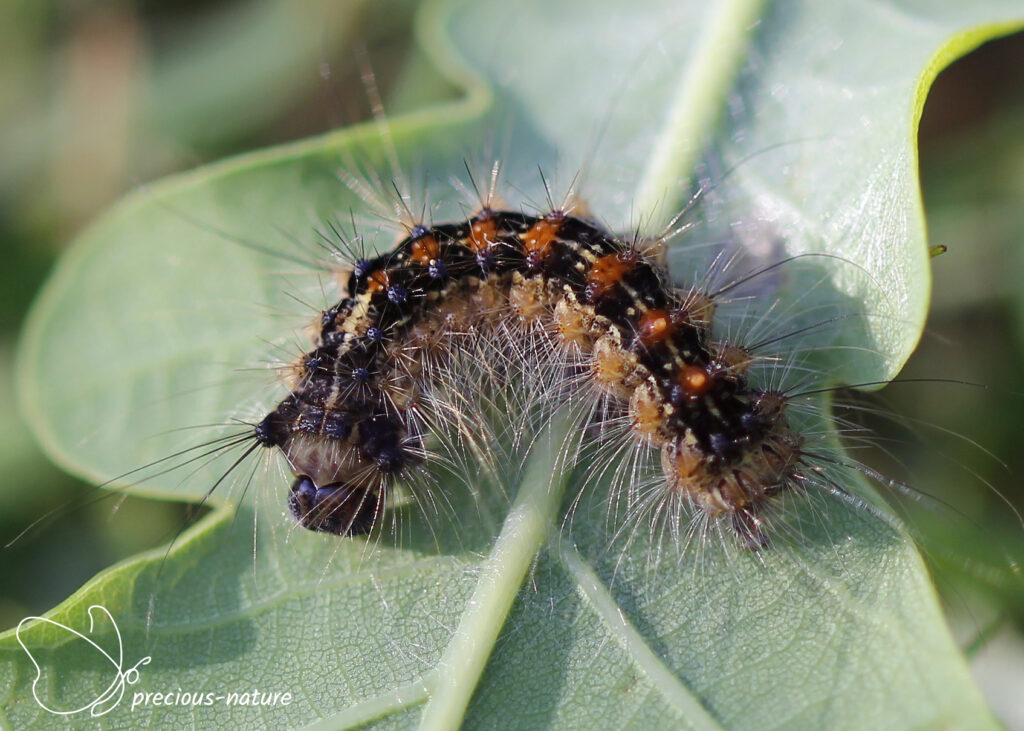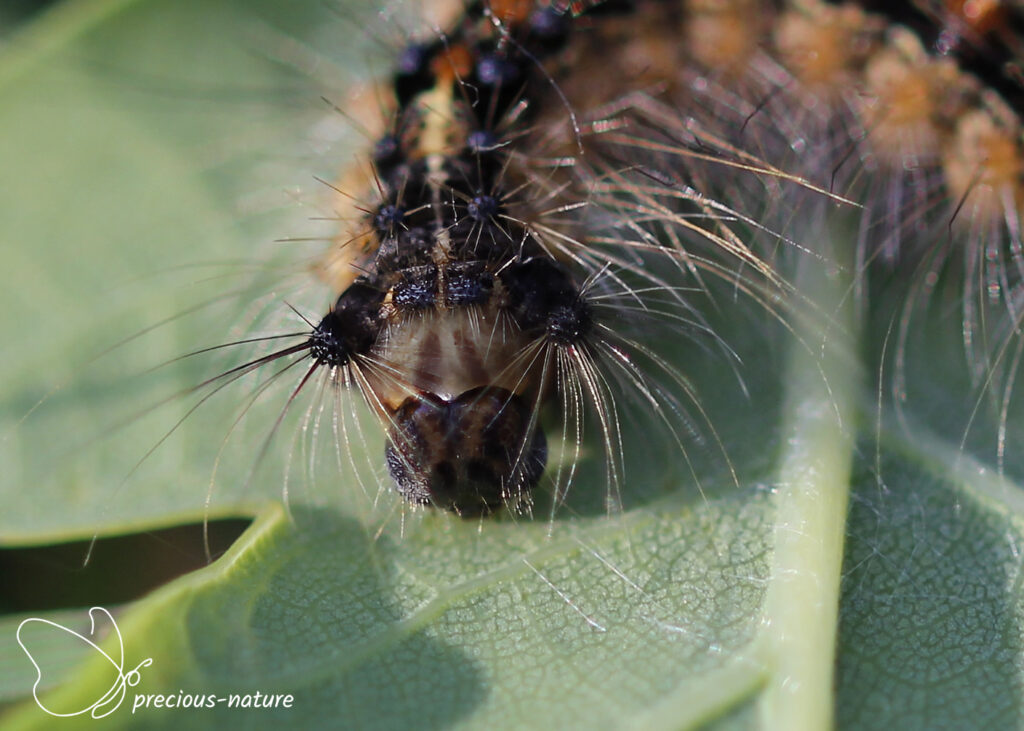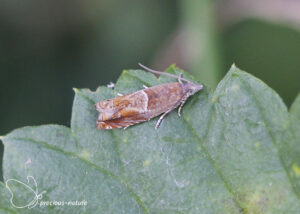Tussock Moths (Lymantriinae) are, according to some people, a subfamily of the Erebid Moths (Erebidae). However, I follow the US government NCBI, where it is seen as a separate family. It is clearly a group of moths resembling owls, given the posterior part of the thorax, the metathorax, which bears the posterior pair of legs. Based on this, this group of moths was first classified under the Owlet Moths (Noctuidae), but in 2011, it was placed under the newly revised family. Around the world, there are about 2,700 species, most of which live in the tropics. 12 species are recorded in the Netherlands. The tussock moths are hairy, with the males having strongly feathered antennae, while the females’ antennae are wire-shaped or sometimes light, feathery. Unlike Tiger Moths (Arctiinae), they have bract colours such as grey and brown.
Genus: Euproctis
Brown-tail – 2017 (NL)
(NCBI-index: 987934)
The Brown-tail (Euproctis chrysorrhoea) has a pure white and slightly glossy top of the wings. The top of the male’s abdomen is white at the front but brown at the end (hence the English name). At the head and the top half of the legs, this butterfly has enormous white hair. He can be distinguished from the White Satin Moth (Leucoma salicis) by the absence of black/white ringed legs. The flight time is from June to September in one generation, and the wingspan is 36-42 mm. Host plant: Hawthorn, Blackthorn, Bramble, and various fruit trees. Dutch name: Bastaardsatijnvlinder. Frisian name: Bastertsatynflinter.
Flying period:

Genus: Euproctis
Yellow-tail – 2018 (NL)
(NCBI-index: 987935)
A moth that is difficult to distinguish from the Brown-tail (Euproctis chrysorrhoea) is the Yellow-tail (Euproctis similis). The main distinction is in the abdomen, but it is often not visible. You usually encounter this moth in a resting position. The abdomen is mainly white with a golden-yellow or orange-brown tip. When they are disturbed, the abdomen is raised between the wings. Furthermore, the costa of the forewing is slightly more rounded than with the Brown-tail. The male has a distinct, white-veined dark grey or blackish spot intersected at the dorsum of the forewing. The female is larger and at most has some faint spots at the tornus. The flight period is in one generation from the beginning of June to the end of September, and the wingspan is 28-35 mm. Host plant: Blackthorn, Hawthorn, Birch. Dutch name: Donsvlinder. Frisian name: Dûnsflinter.
Flying period:

Genus: Leucoma
White Satin Moth – 2018 (NL)
(NCBI-index: 688415)
A welcome and pleasant surprise when I discovered the White Satin Moth (Leucoma salicis). When sharing photos on social media, people responded very positively. This moth is easily recognisable by its intense, silky shine, the black and white ringed legs, and the completely white hairy abdomen. When spreading the wings, it seems as if you can see through the wings. The male has strongly featherlike antennae. The female is larger and has threadlike antennae. The flying period spans one generation, from May to August, and the wingspan ranges from 37 to 50 mm. Host plant: Poplar, Sallow. Dutch name: Satijnvlinder. Frisian name: –
Flying period:

Genus: Lymantria
Gypsy Moth – 2020 (NL)
(NCBI-index: 13123)
The male and female of the Gypsy Moth (Lymantria dispar) are pretty different in size and color. The males have brown-grey forewings with several dark, serrated transverse lines. A small central dot can be seen in the median band, which is formed by the transverse lines. The females are much larger and have cream-coloured wings over which three brown-black transverse lines run. Here, too, there is a dark central spot in the median band formed by the transverse lines. The flying period is from mid-June to the end of August in one generation, and the wingspan is 35-70 mm. Host plant: Various deciduous and coniferous trees. Dutch name: Plakker. Frisian name: Plakker.
Flying period:


